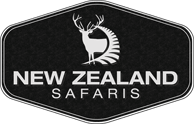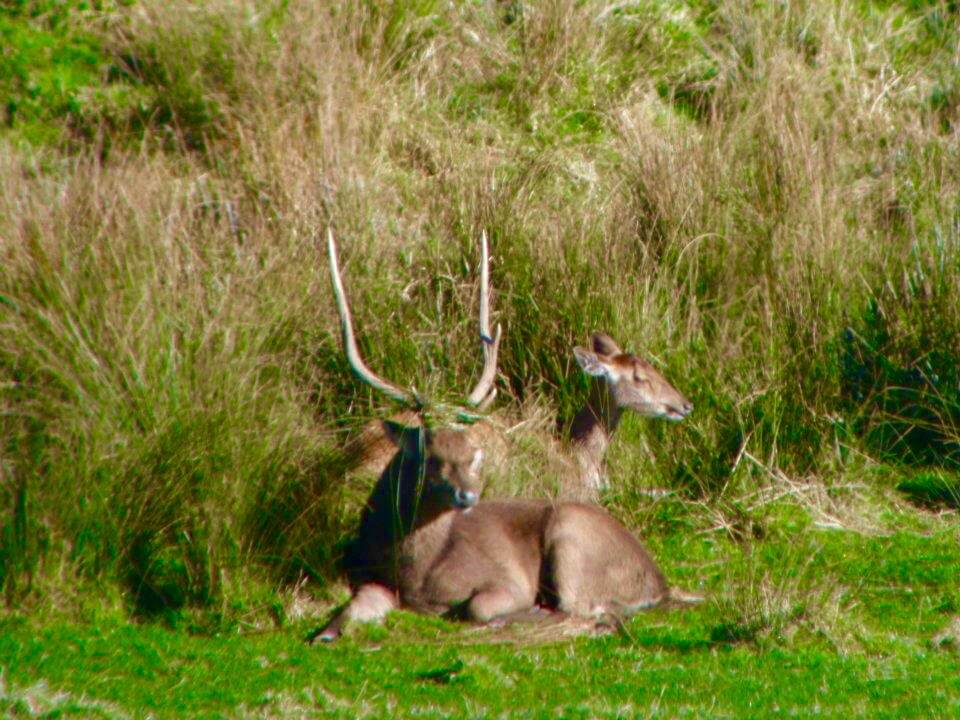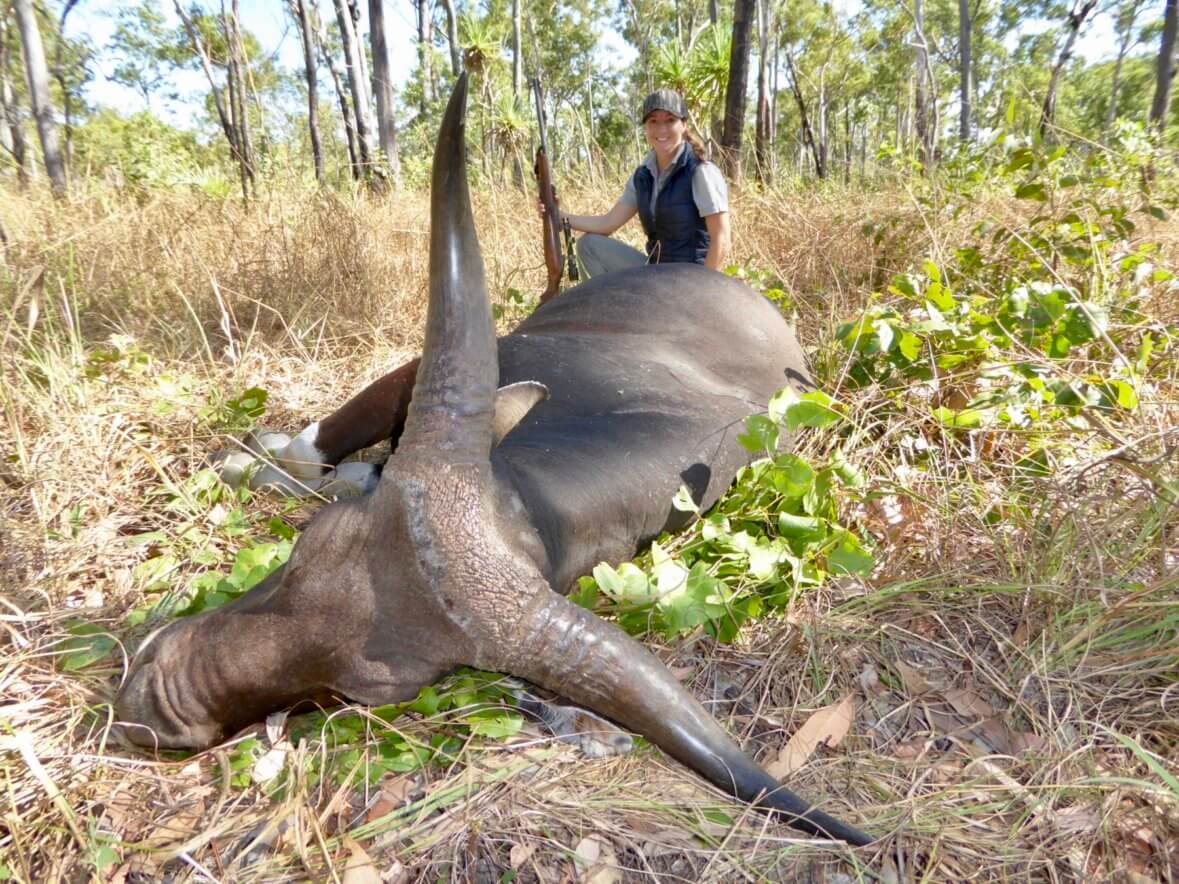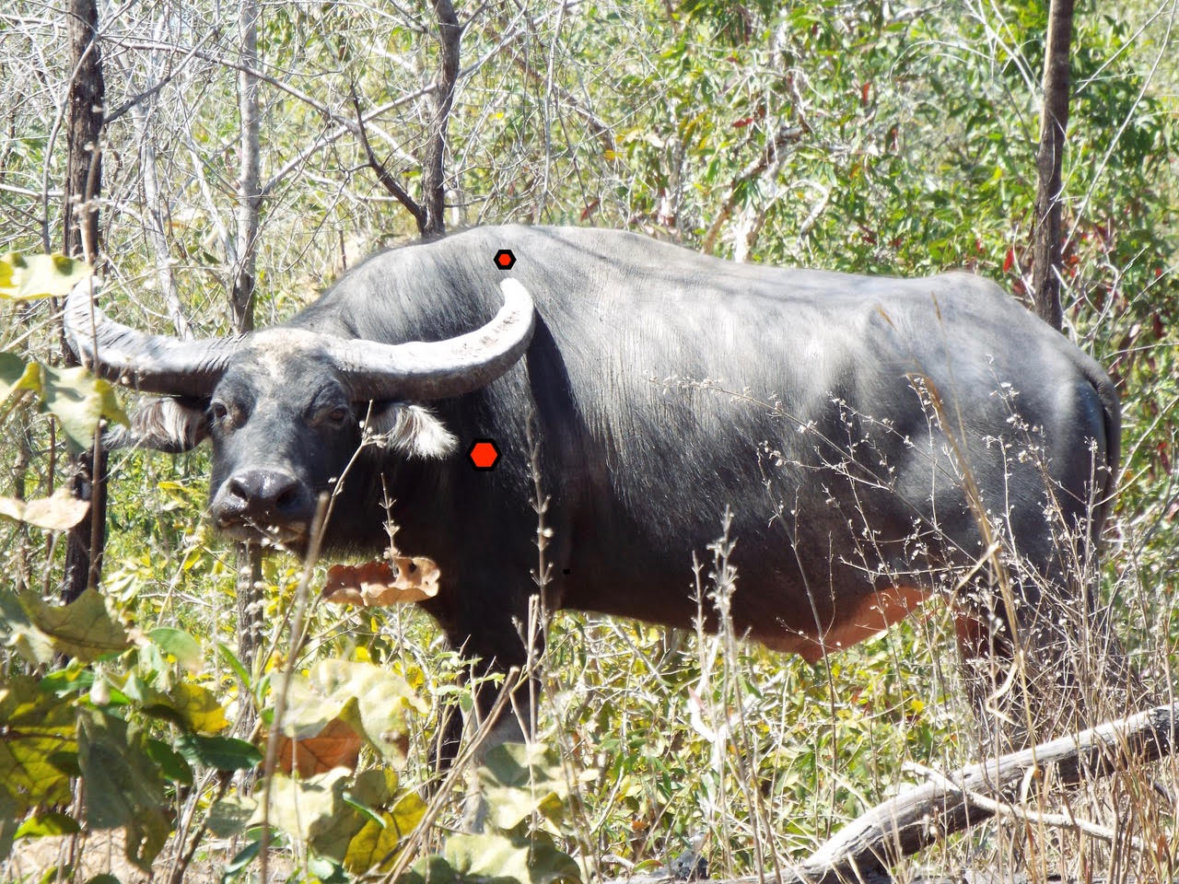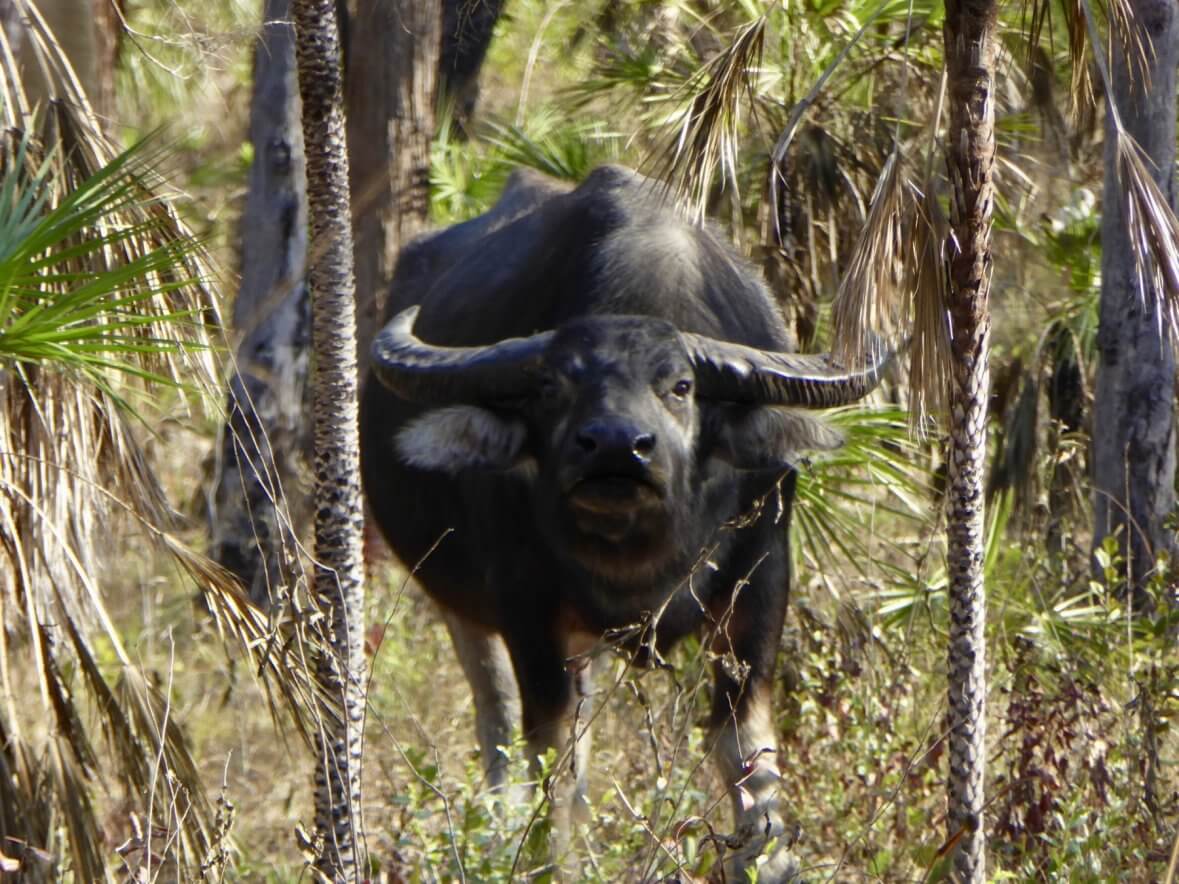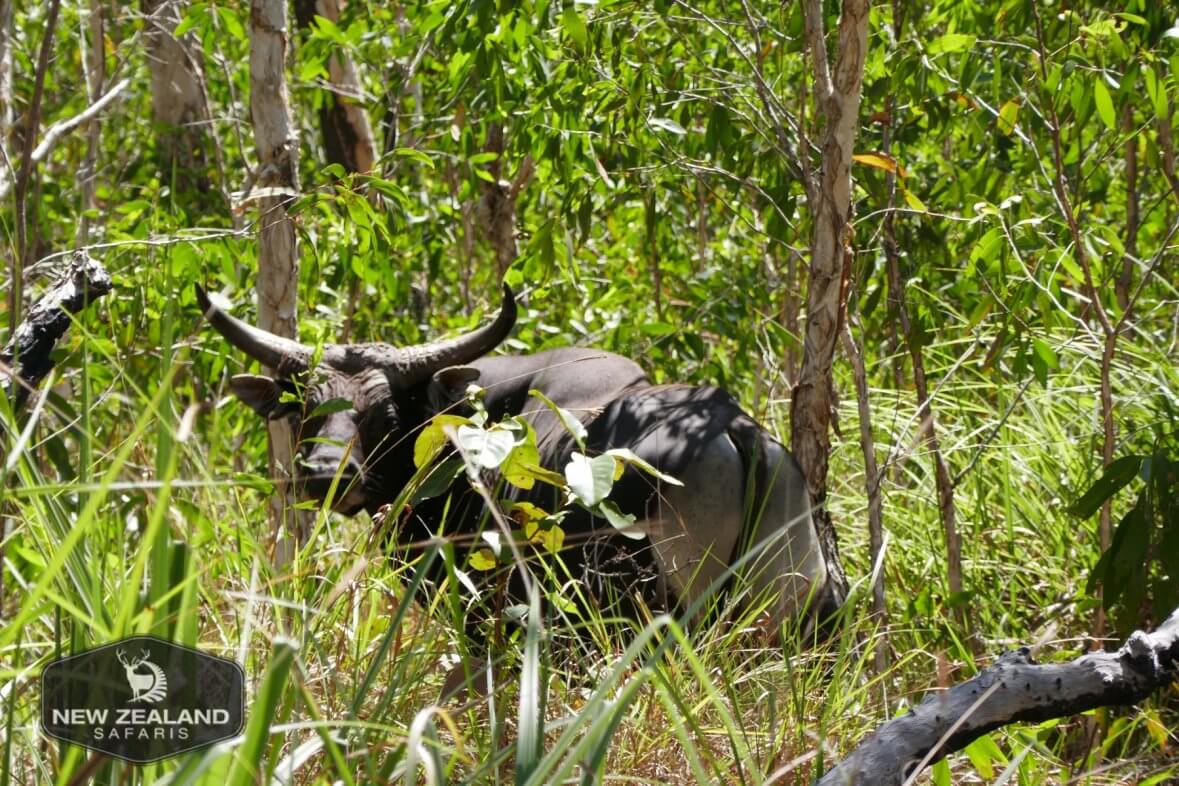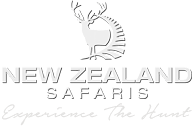A rusa deer (Rusa timorensis) is one of the most elusive deer to be found in the New Zealand bush. New Zealand Safaris offers rusa deer hunts in both New Zealand and Australia.
Description
Size: Male height is about 1060 mm at the shoulder and weighing 122 kg, females 810 mm shoulder height and weighing up to 70 kg.
Colour: Males dark reddish-brown summer coat changing to dark greyish-brown in autumn. Females pale yellowish-red in summer and greyish-red in winter. Chin, throat and underparts cream.
Antlers: Present in males only. Antlers cast December-January and new growth complete by May. Normally 3 points on each antler, with the inner tine longer than the outer and nearly parallel with the inner tine of the other antler.
Social behaviour: Wary and semi-nocturnal rusa spend much of the day holed up in thick vegetation cover. They live in small groups and have relatively small home ranges. Prefer mixed grass areas for feeding and often utilise adjacent farm paddocks and crops.
Reproduction: Rut commences mid-July and continues into August.
Males collect a harem of females. The actual male rusa’s roar could be described as a short husky growl rather than the drawn out bellow of a red stag. Males roar infrequently perhaps only 2-3 times a day with concentrated activity early morning and late afternoon.
Males wallow and mark their territory with scrapes. While servicing these scrapes, males leave an unmistakeable scent that could be described as a pungent sickly sweet aroma.
Gestation period: About 240 days.
Birthing: Fawns are born March – April. Twins rare.
Nomenclature: Male = stag. Female = hind. Young = fawn/calf.
Hunting Tips:
| Characteristics/behaviour | Hunting response |
|---|---|
| Rusa are a medium sized deer. | Rifle ccalibre of .270and above are suitable for shooting rusa deer. |
| Occupy areas of thick cover with warm aspect and adjacent to open grazing areas. | Seek out suitable habitat and either:Hunt very slowly, stopping often to look around as rusa are often very hard to see amongst dense vegetation.Stake out a warm clearing (especially in winter) and wait for a deer to come to feed, often involves a long shot. (Probably the more successful method.) |
| Semi-nocturnal and active mainly early morning and late afternoon, lay up in thick cover during much of the day. | Hunt or be at the stake out location early morning or late afternoon when deer likely to be more active. Rusa Stags rut from June-October. |
| Rusa are rarely encountered on their own. | When a rusa is sighted be alert as others may be in close proximity but hidden from view. |
| Sign of rusa includes a network of well used trails and tunnels connecting bedding sites with feeding areas. | Stake out areas where recently used tracking systems are found accessing feeding areas. |
In August, you’ll find us up in the the remote parts of the Northern Territories of Australia on Australian big game hunting safaris for Banteng, Buffalo, boar and for added fun fishing and cultural tours.
With already two huge Banteng Bulls down to start our 2019 Australia Big Game Safaris over here these are the most elusive large animals you can hunt acting more like a deer than bovine. Completely wild and free ranging we have permits in conjunction with the traditional land owner Soleman Cooper to hunt the highly coveted Garig Gunak Barlu National Park where the last of the pure Banteng exists that have not crossed with cattle and first introduced and still roam wild and free due to heavily managed hunting.
With warm temps these huge animals feed on the burns late evenings and leave them early in the mornings spending the day near fresh water springs in heavy tropical jungle and trees, which makes this hunt even more exciting as they will blow loudly through their nostrils right beside you before dissolving into the grasses. Amazingly exciting we also encounter Water Buffalo, Boar, Wild Horses and at times donkeys.
The ocean fishing is second to none off the rocks of beaches as there is little to no fishing pressure, but swimming is not advisable as there are a couple of aquatic species that have reasonably sharp teeth.
Combine all this to have the traditional aboriginal owner with us talking about his ancestors or hunting methods and tracking these animals in areas where the average white guy would need a GPS this is just one of those hunts that is very pure, exciting, and memorable on many levels. Camp is both comfortable and adequate, we bring our own fresh food and alcohol in with a cook on the beach front cabins which has generator power, flushing toilet and running water/ showering and private bed rooms for this remote location this is perfect place to have thousands of acres to yourself.
Australian Water Buffalo are an amazingly tough animal, underestimated and under gunned by many.
A Bull in his prime will be 600-800 lbs heavier than his cousin the African Cape Buffalo, the Australian Water Buffalo is also about 2-2.5 ft taller with a much denser bone structure. A mature Australian Water Buffalo is 16 plus years, it is not uncommon to take Bulls that are 20 years or older if they are in a wild and free ranging environment like the one in this video.
To make an ethical shot on an Australian Water Buffalo Bull it is recommended to use a minimum of .375 caliber although some hunters may use a .338. On our Australian Water Buffalo hunts we have seen that the .338 caliber is moving much too quickly to achieve maximum expansion of projectile which should be bonded, or, first shot even a solid but this can be left to the experts to discuss in depth.
Taking risky or 50/50 shots is strongly discouraged as a wounded Australian Water Buffalo will be either lost or create a dangerous situation. Taking time to stalk and wait until an almost 90 degree shot is possible and is the best practice. Half way from top of the shoulder to bottom of chest and straight up from the front leg, or if the offset shoulder is slightly forward/behind then centred between the two which should break both shoulders, lungs, and potentially heart.
Depending on the follow up shot (99% of the time a follow up shot is needed) and his position, then the shot should be into the same spot or high neck/spine shot if possible.
Water Buffalo Hunting in Australia is one of the most underrated, wild hunts left in the world today. Water Buffalo (Bubalus bubalis) were first introduced as a food source between 1924-1949 to the Northern Territories of Australia from Timor in Indonesia. Since their introduction the buffalo have now developed a different appearance from their descendants.
Banteng Hunting in Australia on wild, free ranging herds is conducted up on the Coburg Peninsula, in the Northern Territories of Australia. First introduced in 1849 as a food source, today they are the only Banteng herd that is still completely pure in strain. (more…)
